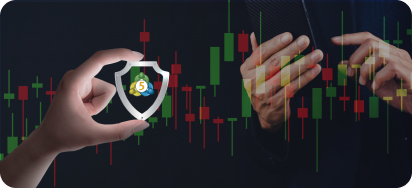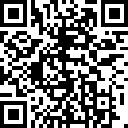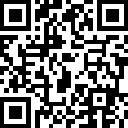Forex Risk Management: Control Risks & Achieve Steady Profit
Forex trading is a market filled with both challenges and opportunities, but regardless of experience, risks always exist in forex trading. Understanding and mastering effective risk management strategies is a fundamental skill every forex trader must possess. This article will help you understand the importance of forex risk management, the main risk management strategies, and how to effectively manage risks on the Ultima Markets platform.
What is Forex Risk Management?
1. Definition of Forex Risk Management
Forex risk management refers to the series of strategies and methods traders use to reduce the various risks they face when investing in the forex market. Risk management is not just about setting stop-loss and take-profit orders; it also involves comprehensive control over aspects such as money management, leverage usage, and trading strategies. Effective risk management helps traders maintain stability in volatile markets and achieve long-term profits.
2. Risks in the Forex Market
The risks in the forex market mainly come from the following aspects:
- Price volatility risk:The forex market experiences significant price fluctuations, especially during major economic data releases or political events.
- Liquidity risk:Insufficient market liquidity can make it difficult for traders to execute orders at their desired prices.
- Leverage risk:High leverage can amplify profits but also magnifies losses. Controlling leverage risk is crucial. Ultima Markets offers flexible leverage settings, up to 1:400, allowing you to adjust leverage according to market conditions and reduce unnecessary risks.
- Political and economic risks:Factors such as government policies and economic sanctions can cause significant volatility in currency prices.
Strategies for Forex Trading Risk Control
1. Setting Stop-Loss Levels
Stop-loss is one of the most basic and effective risk control strategies. Setting stop-loss orders helps traders close positions at the right time during unfavorable market conditions to limit losses. The ideal stop-loss level should be set based on technical analysis, support and resistance levels, and adjusted according to the risk-to-reward ratio for each trade.

2. Using Money Management to Control Risk
Money management is one of the key strategies for controlling risk. By appropriately allocating risk for each trade and avoiding overexposing capital in a single trade, the risk of a margin call can be effectively reduced. It is generally recommended that the risk for each trade should not exceed 2%-3% of the total account balance. This way, even in the event of consecutive losses, traders will still have sufficient funds to continue trading.
3. Using Reasonable Leverage
Leverage is an important tool in forex trading to amplify both profits and risks. While high leverage can bring larger returns in the short term, it also increases risks. Choosing appropriate leverage based on personal risk tolerance is crucial. Ultima Markets offers flexible leverage options, up to 1:400, allowing traders to adjust the leverage ratio according to market conditions and personal risk preferences, helping to reduce risk.
The Advantages of Ultima Markets Platform in Forex Risk Management
In forex trading, choosing a reliable platform is crucial for risk management. As a professional trading platform, Ultima Markets offers various risk management features to help traders more effectively control risks.
- Flexible Leverage Settings: Ultima Markets provides traders with leverage options ranging from 1:1 to 1:400, allowing you to adjust the leverage ratio based on market conditions and your risk tolerance, thus reducing unnecessary risks.
- Advanced Stop-Loss and Take-Profit Features: The Ultima Markets platform allows traders to set stop-loss and take-profit levels when opening positions, automatically closing positions when the market reaches these levels, effectively controlling the maximum risk of each trade.
- Real-Time Risk Monitoring Tools: Ultima Markets provides real-time risk monitoring tools, allowing traders to view their exposure to risk at any time and make timely adjustments based on market changes.
- Demo Account Trading: Beginner traders can use Ultima Markets’ demo accounts for risk-free practice, getting familiar with the platform’s operations and learning how to manage trading risks.
- Fund Security and Segregation: Client funds are stored in independent, regulated bank accounts (e.g., Standard Chartered Bank), separated from the company’s operational funds to ensure fund safety. Additionally, some accounts are covered by professional compensation insurance (e.g., £1 million coverage), further reducing extreme risks.
- Regulatory Compliance: Ultima Markets holds multiple regulatory licenses from countries such as Cyprus (CySEC) and Mauritius, strictly adhering to regulatory requirements to ensure fairness and transparency in trading.
- Technical Infrastructure: Ultima Markets uses top-tier servers and low-latency networks to reduce slippage risk, ensuring fast order execution and avoiding unexpected losses due to technical issues.
To learn more about Ultima Markets’ account opening and risk control features, please check out the real account and start your trading journey.
A Detailed Analysis of Forex Stop-Loss Strategies
1. How to Set Stop-Loss Levels
The purpose of setting a stop-loss is to protect your capital from significant losses during market fluctuations. The most common stop-loss setting methods include using technical indicators (such as moving averages or Bollinger Bands) and key support/resistance levels to set the stop-loss. For each trade, the stop-loss level should be adjusted based on the market’s volatility and the risk-to-reward ratio.
2. How to Calculate the Risk-to-Reward Ratio
The risk-to-reward ratio is an important indicator to assess whether a trade is worth taking. Generally, traders should set at least a 1:2 risk-to-reward ratio, meaning that for every 1 unit of risk, the target return should be 2 units or more. This risk-to-reward ratio can help maintain stable profits in the long run.
3. Using a Forex Demo Account to Practice Risk Management
Using a demo account is an important method for learning forex trading and risk management. A demo account allows you to practice trading in a risk-free environment, testing your stop-loss strategies, money management, and trading skills. This helps you accumulate experience before live trading, reducing potential losses.
FAQs About Forex Risk Management
1. How to Ensure My Forex Trading Risks Are Controllable?
To effectively control risks, you need to set reasonable stop-loss levels, control leverage ratios, choose appropriate money allocation strategies, and regularly review and adjust your trading strategies. Using platforms like Ultima Markets, which offer flexible risk control tools, helps improve trading stability. To learn more, please check out the demo account and start practicing.
2. Are There Other Tools to Help with Risk Management?
Yes, in addition to stop-loss and take-profit strategies, forex hedging is also an effective risk management method. Hedging helps you diversify risks across multiple markets, reducing the impact of market fluctuations on trades.
Conclusion
Forex risk management is an essential topic that every trader must take seriously. Whether you are a beginner or an experienced trader, mastering the right risk management strategies can help you remain stable in a volatile market. By using proper money allocation, leverage management, stop-loss settings, and practicing with a demo account, you can significantly increase your chances of success in forex trading. On the Ultima Markets platform, you can enjoy flexible risk management tools and professional support to make your trading journey more stable.







![[MetaTrader 5 Mobile Trading Complete Guide] 7 Key Advantages for Real-Time Market Access](https://www.ultimamarkets.com/wp-content/uploads/2025/04/mt5_mobile_trading_card.jpg)
















